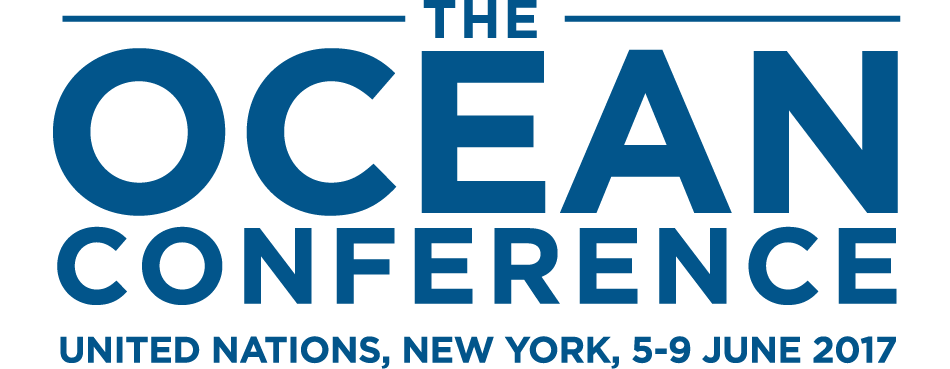Daily report for 5 July 2018
22nd Meeting of the Subsidiary Body on Scientific, Technical and Technological Advice (SBSTTA 22) and 2nd Meeting of the Subsidiary Body on Implementation (SBI 2) of the Convention on Biological Diversity (CBD)
The 22nd meeting of the Subsidiary Body on Scientific, Technical and Technological Advice (SBSTTA 22) of the Convention on Biological Diversity (CBD) continued Thursday with the consideration of conference room papers (CRPs) based on the discussions held earlier in the week. CRPs were discussed in plenary on the following agenda items:
- Updated scientific assessment of progress towards selected Aichi Biodiversity Targets and options to accelerate progress; and
- Synthetic biology.
A Friends of the Co-Chairs group met in the morning on digital sequence information. The contact group on risk assessment met over lunch and in the evening. The contact group on marine and coastal biodiversity also convened in the evening.
Updated scientific assessment of progress towards selected Aichi Biodiversity Targets and options to accelerate progress
SBSTTA Chair Theresa Mundita Lim introduced document CBD/SBSTTA/22/CRP.1.
During a paragraph-by-paragraph review, parties agreed to express greater concern regarding insufficient progress towards the Aichi Targets and information gaps, as proposed by NEW ZEALAND, supported by FINLAND and MEXICO.
CANADA, supported by NEW ZEALAND and ARGENTINA, and opposed by the EU, FINLAND and BELGIUM, emphasized that the Subsidiary Body on Implementation (SBI), not SBSTTA, is the appropriate forum to discuss the annex on possible options to accelerate progress towards the achievement of the Aichi Targets. MOROCCO cautioned against adding to the SBI’s already dense agenda. BRAZIL supported joint consideration by both SBSTTA and SBI. Parties converged on a proposal made by the UK, with the NETHERLANDS, to retain the annex but also refer it to the SBI.
Similar points were raised regarding the proposed list of activities for accelerating progress on the Aichi Targets made in the draft recommendations to the Conference of the Parties (COP), with CANADA and others considering that the options should be moved from the main text to the annex. Parties agreed to retain references in the main text to strengthening the capacity of national focal points, and recognizing the need for effective and systematic use of the support mechanisms identified in the Strategic Plan. Parties disagreed on whether the list of options should be considered “as a package, taking a scientific and technical perspective,” or whether the options would be discussed individually.
INDONESIA, opposed by NEW ZEALAND and BELGIUM, requested calling for “reforming” instead of “eliminating” perverse incentives to accelerate progress on Aichi Target 3. CAMEROON, supported by SOUTH AFRICA, stressed the need to support developing countries in undertaking national biodiversity assessments.
The UK, supported by NORWAY, CANADA, the EU, CAMEROON, and SWEDEN, proposed an additional paragraph to request the Executive Secretary, subject to the availability of resources, to consider the IPBES assessments, including the regional assessments and the land degradation and restoration assessment, in preparing the post-2020 biodiversity framework and the fifth Global Biodiversity Outlook, and provide the results for SBSTTA consideration prior to COP 15.
A drafting group was created to further address these matters.
Synthetic Biology
CANADA, supported by AUSTRALIA, NEW ZEALAND, and JAPAN, but opposed by MOROCCO, GERMANY, SWEDEN, SWITZERLAND, ETHIOPIA, and BOLIVIA, proposed to recognize the need to conduct an analysis of the relationship between synthetic biology and the criteria for new and emerging issues, as set out in COP Decision IX/29, paragraph 12, to be completed before any further work is done on this issue. When discussing the terms of reference of the Ad Hoc Technical Expert Group (AHTEG), delegates agreed to prioritize this item by moving it to the top of the AHTEG’s list of tasks annexed to the document.
AUSTRALIA, supported by BRAZIL, NEW ZEALAND, CANADA, and JAPAN, and opposed by the EU, NORWAY, and SWITZERLAND, stressed that the AHTEG, not SBSTTA, needed to conduct the robust analysis of the relationship between synthetic biology and the criteria for new and emerging issues.
RWANDA suggested establishing a process and modalities for regular horizon scanning, monitoring, and assessing of new developments in the field of synthetic biology, and a mechanism for regular reporting of the outcomes to the SBSTTA, COP, and COP/MOPs. The suggestion was bracketed.
GERMANY, supported by CANADA and AUSTRALIA, and opposed by BOLIVIA, suggested deleting “developments in the fields of synthetic biology resulting from genome editing” in the paragraph that refers to horizon scanning, monitoring, and assessing.
On a paragraph calling on parties, taking into account the current uncertainties regarding engineered gene drives, to apply a precautionary approach in the development and release, including experimental releases, of organisms containing gene drives, MEXICO, supported by RWANDA, SWITZERLAND, and BOLIVIA, suggested adding “in order to avoid significant and irreversible adverse effects to biodiversity.” MOLDOVA, with BOLIVIA and RWANDA, proposed taking into account the potential for transboundary movements. BOLIVIA also suggested to take into account human health and the value of biodiversity to indigenous peoples and local communities (IPLCs), and to “refrain from” developing and releasing organisms containing engineered gene drives. GERMANY, supported by CANADA, noted that obstructing the “development” of products, can pose uncertainties for scientists. CANADA and AUSTRALIA suggested deleting the entire paragraph.
Noting such activities fall under the Cartagena Protocol, CANADA and AUSTRALIA, opposed by BOLIVIA, JAPAN, and VENEZUELA, supported deleting language recognizing that research and analysis are needed before organisms containing engineered gene drives are considered for release into the environment. BRAZIL, supported by GERMANY, and opposed by SWITZERLAND, BOLIVIA, VENEZUELA, FRANCE, NORWAY, JAPAN, and RWANDA, proposed that research and analysis are needed “when,” not “before,” considering releasing such organisms. INDONESIA, supported by MOLDOVA and RWANDA, and opposed by AUSTRALIA and the NETHERLANDS, proposed assessment of social, ethical, and transboundary implications. Parties also diverged on the principle of “case-by-case risk assessment,” with the NETHERLANDS and JAPAN supporting its inclusion, and BOLIVIA opposing.
On a paragraph noting that free, prior, and informed consent (FPIC) of IPLCs is needed when considering the possible release of organisms containing engineered gene drives that may impact their traditional knowledge and livelihoods, BRAZIL said the AHTEG’s conclusion is that FPIC “might be warranted” rather than “needed.” SWEDEN noted that both versions are contained in the current AHTEG’s report.
Regarding a paragraph calling on parties to continue to develop or implement, as appropriate, measures to prevent or minimize exposing the environment to organisms, components, and products of synthetic biology in contained use, as well as measures for their detection, identification, and monitoring with special consideration to the centers of origin, BOLIVIA, opposed by the NETHERLANDS and FINLAND, suggested reference to internationally agreed standards. BOLIVIA and MOLDOVA suggested reference to engineered gene drives. AUSTRALIA, supported by CANADA and NEW ZEALAND, suggested alternative language stating that the measures should, in accordance with national circumstances and relevant domestic legislation and policies, manage risks associated with accidental release. SWITZERLAND and SWEDEN urged using standard language when referring to contained use. BRAZIL, GUATEMALA, ECUADOR, and MEXICO stressed the importance of referring to the centers of origin.
Regarding the extension of the AHTEG’s mandate, RWANDA requested to terminate the current AHTEG and establish a new one. MEXICO and EGYPT suggested extending its mandate. AUSTRALIA and NEW ZEALAND requested a new round of nominations, noting that the Pacific is currently not represented. RWANDA, with BOLIVIA and MOLDOVA, raised the issue of applying the procedure for avoiding or managing conflicts of interest in expert groups, with the EU and SWEDEN noting that this will be discussed in the forthcoming meeting of the SBI.
On sharing experiences on the detection, identification, and monitoring of organisms, components, and products of synthetic biology, CANADA, AUSTRALIA, NEW ZEALAND, and JAPAN stressed that components and products cannot be distinguished from each other. SWEDEN, NORWAY, VENEZUELA, and FRANCE called for retaining both components and products. After a lengthy debate, parties agreed to retain all three terms.
On the AHTEG’s terms of reference, discussions first focused on the task of undertaking a review of the state of knowledge on the impacts of current and near-future synthetic biology applications. BRAZIL and AUSTRALIA supported removing explicit reference to applications involving organisms containing engineered gene drives, while BOLIVIA, SWEDEN, SWITZERLAND, and FRANCE opposed. BRAZIL said there was a duplication of work with the risk assessment AHTEG, while SWEDEN pointed out that the risk assessment AHTEG will only deal with living modified organisms (LMOs) containing gene drives, and not all engineered gene drives are considered LMOs. Parties agreed to a compromise text that noted the need to avoid duplication of work.
Views initially diverged on whether the review should cover positive impacts, in addition to negative ones. MOLDOVA, supported by BOLIVIA, urged against an “advertisement” for gene drives by over-focusing on potential positive impacts. The NETHERLANDS and AUSTRALIA opposed, with SWEDEN adding that information about both positive and negative impacts was needed for decision making. Parties agreed to retain reference to positive impacts.
GERMANY, with the UK, opposed by SWEDEN, argued it is not feasible at this time to prepare a forward-looking analysis of synthetic biology applications in early stages of research and development. SWEDEN emphasized the importance of horizon scanning. Parties agreed that the AHTEG would prepare a forward-looking report on early-stage synthetic biology applications with reference to the three objectives of the Convention.
A Friends of the Chair group was established to address the outstanding issues.
Contact Groups
Risk Assessment: The contact group on risk assessment met both at lunchtime and in the evening to address: the identification and prioritization of specific issues of risk assessment of LMOs that may warrant consideration; and the terms of reference for the AHTEG on risk assessment.
Addressing the specific issues that may warrant consideration, delegates considered a suggestion stating that while these issues “have been assessed with existing risk assessment frameworks, they pose additional technical or methodological challenges that require further attention.” They also addressed a proposal noting that these issues have been “identified by parties to be priorities, taking into account the challenges to risk assessment of developing countries and countries with economies in transition.”
Discussions further focused on, inter alia: transboundary movements; deliberate or accidental introduction into the environment; the stage of commercialization; and the tasks to be performed by the AHTEG.
Marine and Coastal Biodiversity: The contact group on marine and coastal biodiversity met in the evening to continue discussions on the non-paper, inter alia, focusing on modalities for modifying the description of ecologically or biologically significant marine areas (EBSAs) within national jurisdiction. A key point in this regard related to defining the steps to be taken for these modifications to be reflected in the EBSA repository, with many emphasizing the need to increase the scientific and technical credibility of the process, and stressing the need for sharing information supporting the proposed modification.
Deliberations in both contact groups continued into the night.
In the Corridors
After plenary discussions of SBSTTA 22’s lengthy agenda concluded, delegates shifted into negotiation mode on Thursday. The elevators and escalators in the building had to accommodate a steady stream of delegates rushing from plenary discussions on the CRPs covering the Aichi Targets and synthetic biology, to various other negotiating groups on digital sequence information, risk assessment, and marine biodiversity. A drafting group on the Aichi Targets also convened in the afternoon, along with numerous informal consultations. The CRPs on protected areas and other effective area-based conservation measures, conservation and sustainable use of pollinators, invasive alien species, and the second IPBES work programme were posted on the Secretariat’s website, but CRPs on climate change and biodiversity, and outstanding agenda items under consideration in contact groups were still being drafted as of late Thursday evening. With two days left and ten draft SBSTTA recommendations to the COP still to be adopted, many wondered if they would get any sleep, much less attend the Montreal Jazz Festival before it closes on Saturday night.
-->
Specific funding for coverage of the Ocean Conference - June 2017, has been provided by the
XXX, XXX, and XXX
-->
IISD Reporting Services is a division of the International Institute for Sustainable Development (IISD).
Earth Negotiations Bulletin (ENB), ENB+, and Knowledge Management for Sustainable Development
are branches within IISD Reporting Services.
© 1992-2018, IISD Reporting Services. All rights reserved.







